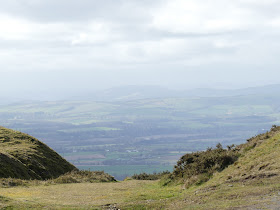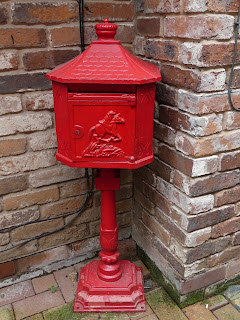Full moon rising over the nearby copse on Thursday evening.
Timothy having a tipple and perusing a new book on The Mortimers.
I would really have liked to stop a few days longer but Friday was our last day as there were reasons for having to return home. On Friday morning I decided to have a look round the church nearby at Hatfield dedicated to St Leonard. I've walked round the church exterior and churchyard several times already but Friday's visit was to see the interior.
Lesser Celandine on the bank where I parked the car.
St Leonard's has an 11th century nave which may even be pre-Conquest it was extended west in the 14th century when the chancel was probably re-built.
I just love this bricked up doorway - it is an early Norman doorway with a lintel of three large joggled stones. The tympanum shows opus reticulatum (square stones set diagonally). Herringbone masonry in the wall can also be seen.
The bell turret may be medieval and was weather-boarded in 1903.
The open timber west porch is partly 14th century.
And so inside the church.
Plain Norman font which has been superseded by a 19th century one (which to be honest I thought was rather ghastly!).
Looking towards the chancel. The chancel was restored in 1878 and rest of church in 1903 and most fitttings date from around 1800 (pulpit and west gallery).
That new font :(
I loved the pattern of brickwork in the church - some off the nave walls were rebuilt in 1723 after collapsing.
The East window by Mayer and Company 1878.
We left about 2.00 p.m and came home via Tenbury Wells and Droitwich joining the M5 much further up to avoid the road works at Worcester.
I must admit I wish I could have been there this week with the lovely weather we have been having.
Back at home Blue Tits are building a nest in the nestbox which has a camera but still no sign of frogspawn in the pond.
I hope everyone is staying safe and well.
Photos taken by me with the Panasonic Lumix FZ330 bridge camera
Reference: Buildings of England - Herefordshire Pevsner (latest edition).














































































